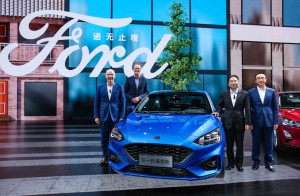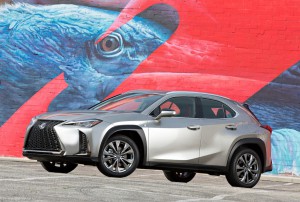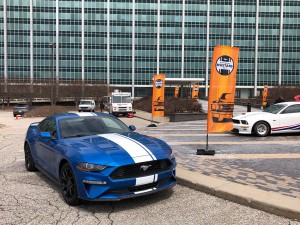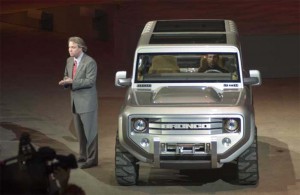(This story has been updated to include comments and details on shifting product plans at General Motors and other manufacturers.)
The Mustang will be the last survivor.
That’s according to Ford Motor Co.’s new plan that calls for the elimination of all cars, except the original pony car, by 2022.
What’s left will be nothing but profit centers, or at least potential profits, as the company focuses on what consumers are really buying these days: trucks, sport-utilities and crossovers. Ford CEO Jim Hackett confirmed the plan during the company’s earnings call.
“We’re going to feed the healthy parts of our business and deal decisively with the areas that destroy value,” Hackett said during a conference call.
(Ford walking tightrope trying to please everyone with Mustang variants. Click Here for the story.)
“It’s been easy to identify what’s wrong and what we need to do about it. The hand-wringing maybe that has been around in our business is gone. We’re starting to understand what we need to do and making clear decisions there.”

The newest Focus model debuting in China this week. Production will soon move there - and the U.S. will soon get only a crossover version.
That means 80% of Ford’s car business will be gone in less than four years, and mean more of what consumers are calling for and, in the process, putting more and more money in Ford’s coffers. A massive reduction in operating costs and a plan to reduce capital spending from 2019 to 2022 by $5 billion announced Wednesday, added to the product transformation come from the “fitness” initiative Hackett outlined in October.
(Click Here to see more about Mustang being the best-selling sports car in the world for three years running.)
Ford will shrink its car portfolio, and at the same time it plans to add five all-new SUVs over the next two years, along with the 2019 Ranger midsize pickup that debuted at the Detroit auto show in January.
In addition, the company is following a larger trend by offering every new vehicle, Ford or Lincoln, during the next two years with either a hybrid or plug-in hybrid engine option. This will act as a buffer against rising gas prices as the vehicles get bigger, according to Hackett and Jim Farley, Ford president of global markets.
(To see Ford going California dreaming with special edition Mustang, Click Here.)
Ford said it is exploring new white space vehicle silhouettes combining attributes from cars and utility vehicles, it plans to bring five new vehicles between the smallest and largest utility vehicles.
“This might be the boldest move Ford has made in many years,” analyst Dave Sullivan, of AutoPacific, Inc., told TheDetroitBureau.com. “This is not a surprise given the direction that consumer preferences have moved.”
Other automakers are also rethinking their product mix strategies.
On Thursday morning, GM Chief Financial Officer Chuck Stevens told reporters that the company will “make significantly lower investments on a go-forward basis” in its passenger car line-up.
“We are focusing on the right mix of products,” added CEO Mary Barra, during a conference call with analysts and media to discuss GM’s first-quarter earnings. GM recently announced it is dropping the slow-selling Chevrolet Sonic. It has trimmed production of the Chevy Cruze and is studying the fate of other sedans, coupes and hatchbacks, including the Chevy Impala. But Barra stressed, “We’re going to continue playing in (passenger car) segments where they will still be opportunities.”

Ford isn't alone in adding new utes. Lexus just launched the new UX - but officials say they won't entirely abandon sedans.
Toyota and its Lexus brand have rapidly expanded their collective SUV portfolio. The luxury side has added the small UX and compact NX, as well as a three-tow version of the wildly popular RX, but while “We understand the importance of SUVs, but we also understand the importance of great sedans,” Cooper Ericksen, the brand’s U.S. marketing chief, said during a preview of the seventh-generation ES this week.
For its part, only Fiat Chrysler Automobiles has been as aggressive as Ford in moving out of the passenger car market. Over the last several years it abandoned the Dodge Dart and Chrysler 200 sedans, converting their plants to produce new Jeeps and Ram trucks. FCA now offers only the big Chrysler 300 sedan, as well as the Dodge Charger and Challenger models that compete with the Ford Mustang in the muscle car market, one of the few passenger car niches retaining any real vitality.
(Paul A. Eisenstein contributed to this report.)



I’m curious to see what Ford deems as “white space”. The SUV/CUV world is nothing but churned up ocean.
Uh, ok.
This moves begs the question: why get rid of the last CEO (Mark Fields?) when he was essentially moving towards the same direction? He was moving FOMOCO towards being a “Connectivity” company; perhaps he should have branded it a “Connected Truck” company?
That’s a question many folks continue to ask…
Paul E.
I continue to believe the abandonment of cars is a mistake. In a few years, we will be reading stories about how Ford/GM/Chrysler are out of step with consumers because they don’t have any cars to sell. Germany and Japan seem to be able to figure this out, but not the US.
They will probably have lots of cars in the pipeline, all electrified or other alturnative fuels.
Gosh, isn’t a crossover just a car with a different body anyway? Everything is a cycle, when cars are needed(?), the companies will have billions stashed away to build and equip new plants and update aging equipment from current times.
Hi, Bob, more or less, though there are always differences in the underlying platform. The newest “architectures” are more flexible than ever, allowing the Toyota New Generation Architecture to be used for vehicles as diverse as RAV4, Corolla and Prius, but there are changes in width, length, height and much, much more. Note today’s story on Toyota’s investment in its Miss. plant for Corolla. My understanding is this ALSO would allow it to flex to another vehicle off the same platform if Corolla sales continue to dip.
Paul E.
Yikes…let;s all take a deep breath while remembering remembering the likes of New Coke and the Mac Donald’s debacle. They blew those-off their customers and paid a hefty price, as I am sure will become Ford’s latest Edsel qualifier.
They did the same thing in the 90s. They killed off a bunch of aging cars and focused on Explorers and navigators.
I wonder if they will still sell cars in foreign markets and try to move them to the US if demand changes.
They’ll continue to sell cars in most markets.
Paul E.